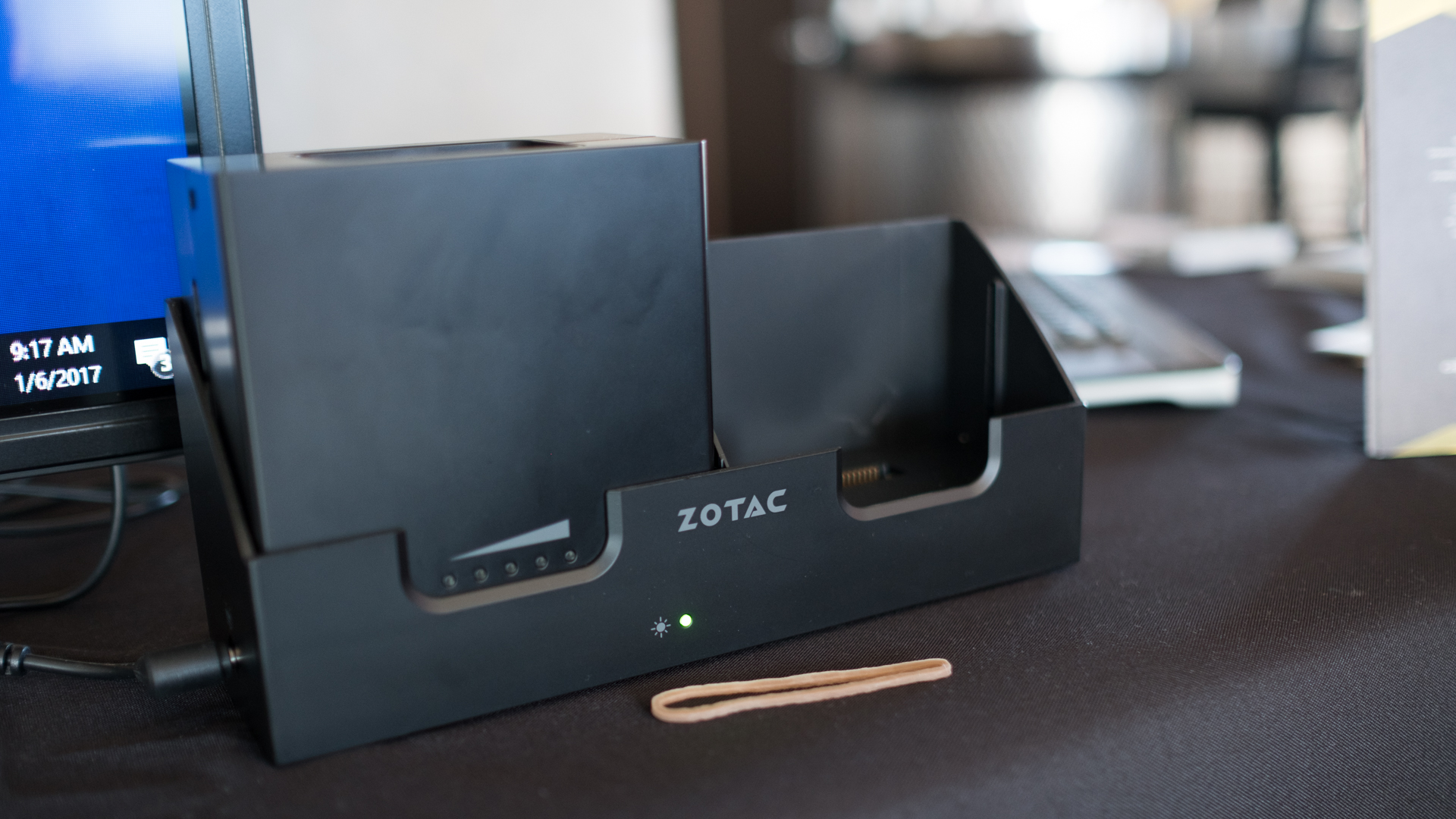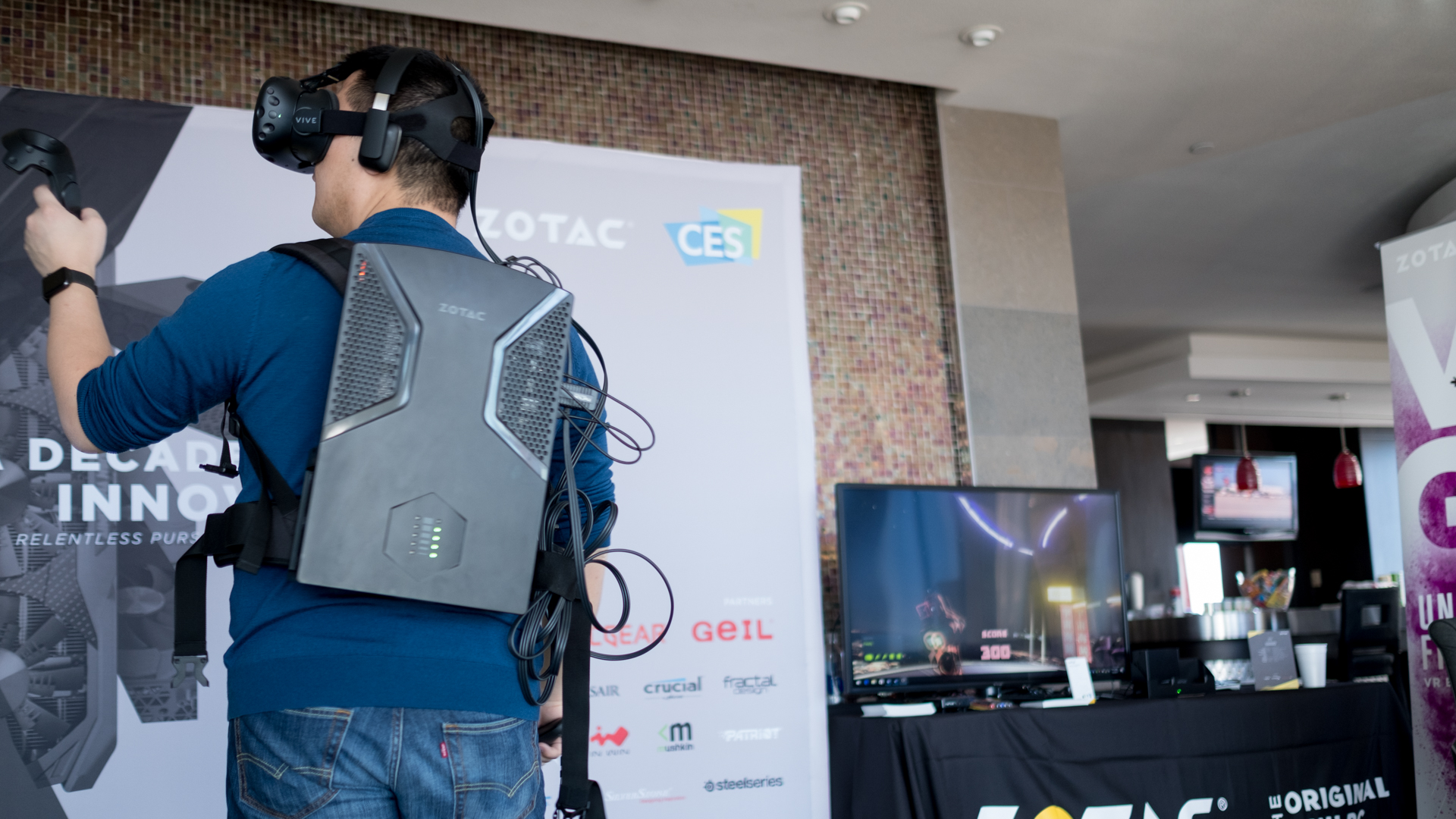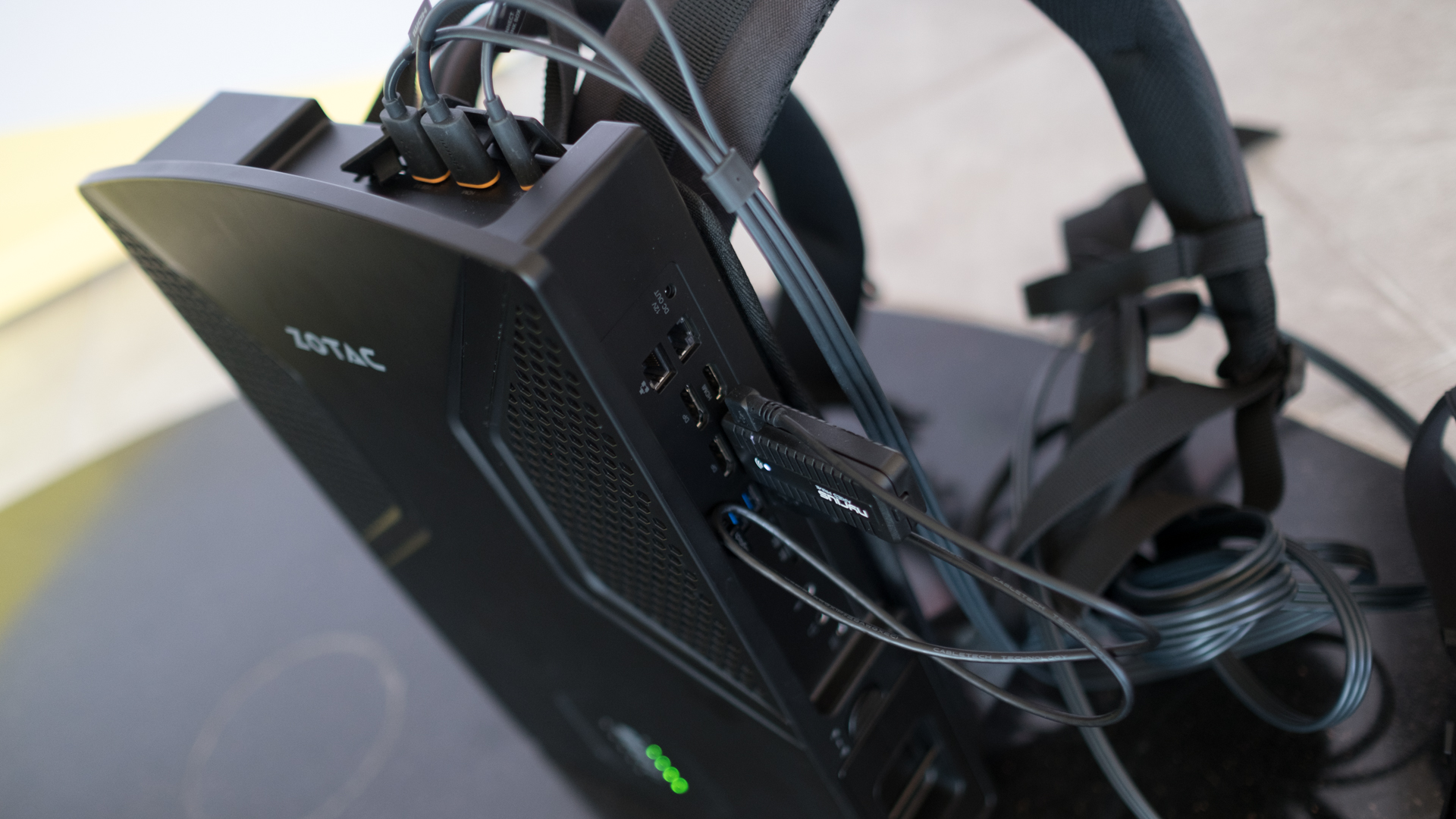Early Verdict
In a growing world of VR-ready backpack PCs, the Zotac VR Go is the most elegant solution we’ve seen yet.
Pros
- +
High-end desktop performance
- +
External battery charger
- +
Comfortable fit
Cons
- -
Locked processor
Why you can trust TechRadar
Zotac was one of the first companies to put together a VR backpack PC concept, and now it also has one of the first devices to come to market, in the shape of the Zotac VR Go, unveiled at CES 2017.
The VR Go has come a long way since Zotac's first VR Backpack, which essentially threw a Mini ITX desktop into a bag with a huge battery and called it a day. Now we have a PC all-in-one in a custom-designed enclosure for the explicit purpose of being worn and carried around on your back.

The overall design of the Zotac VR Go is almost plain but elegant compared to the loud designs of the MSI VR One and HP Omen VR Backpack. It’s square on almost all sides except for an arched top and the only other notable feature is a pair of battery life indicators.
Weighing in at 10 pounds, the Zotac VR Go might seem like a burden on your back but thanks to its wide, padded straps all the weight feels well distributed. It also keeps cool with vents on the face of the case pulling in cool air while heat exhausts through the left side of the wearable PC.

Spec-wise, this VR Go is equipped with a quad-core 2.8GHz Intel Core i7-6700T processor, Nvidia GTX 1070, 16GB of DDR4 RAM and 240GB M.2 SSD, with room for an additional 2.5-inch SSD. That’s more than enough power to run all the current VR games, not to mention regular PC gaming, with ultra-settings at 1080p or 1440p.
However, you’ll only be able to game unplugged for up to two hours, even with two large batteries the size of an SFX power supply. Thankfully an external charger comes bundled with the backpack PC, allowing you to recharge one pack while you play with the other.

The Zotac VR Go runs for $1,999 (about £1,630, AU$2,740), which is far less than an equally powerful laptop, and slightly more than you would pay for a non-portable gaming desktop.
Sign up for breaking news, reviews, opinion, top tech deals, and more.
That said, the VR Go has a strong rival in the $2,299 (about £1,820, AU$3,060) MSI VR One 6RE, which offers the same graphical power with an unlocked Intel Core i7-6820HK and 512 GB SSD.

During our hands-on time with the Zotac VR Go we played a silky smooth game of Space Pirate Trainer. What’s more, we were able to dodge incoming shots with more agility and freedom than we’ve ever had with a cable lying around at our feet.
Beyond its uses as a wearable VR-ready PC, we can also imagine taking the VR Go with us to events. Zotac also sees owners using it as their everyday computer at both work and home.

Early verdict
The Zotac VR Go is a huge step up from the jury rigged solution we first saw with the company’s original VR Backpack. In classic fashion, Zotac has put tons of power into an elegant solution and for a reasonable price, as with its Brix and Magnus desktops. We can’t wait to give this portable VR-ready system a full test and review.
- New year, new tech – check out all our coverage of CES 2017 straight from Las Vegas, the greatest gadget show on Earth.

Kevin Lee was a former computing reporter at TechRadar. Kevin is now the SEO Updates Editor at IGN based in New York. He handles all of the best of tech buying guides while also dipping his hand in the entertainment and games evergreen content. Kevin has over eight years of experience in the tech and games publications with previous bylines at Polygon, PC World, and more. Outside of work, Kevin is major movie buff of cult and bad films. He also regularly plays flight & space sim and racing games. IRL he's a fan of archery, axe throwing, and board games.
What is a hands on review?
Hands on reviews' are a journalist's first impressions of a piece of kit based on spending some time with it. It may be just a few moments, or a few hours. The important thing is we have been able to play with it ourselves and can give you some sense of what it's like to use, even if it's only an embryonic view. For more information, see TechRadar's Reviews Guarantee.
